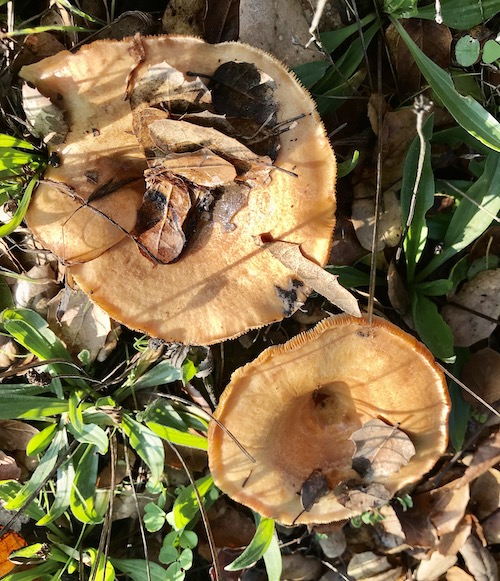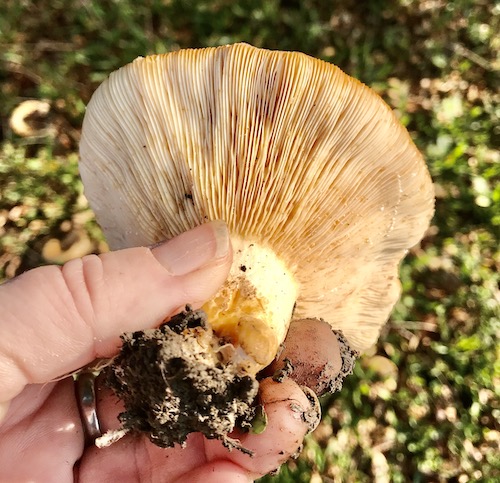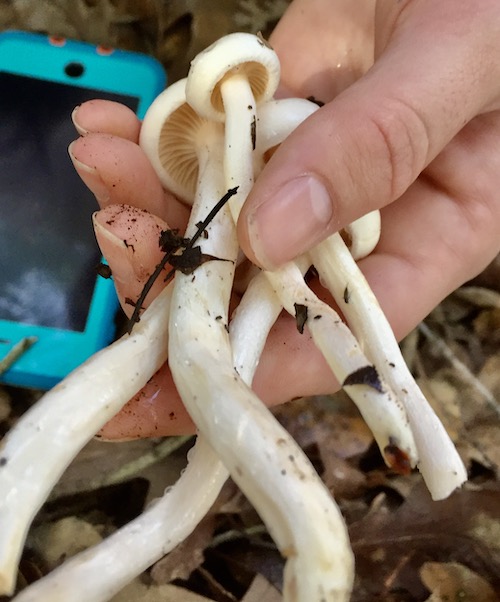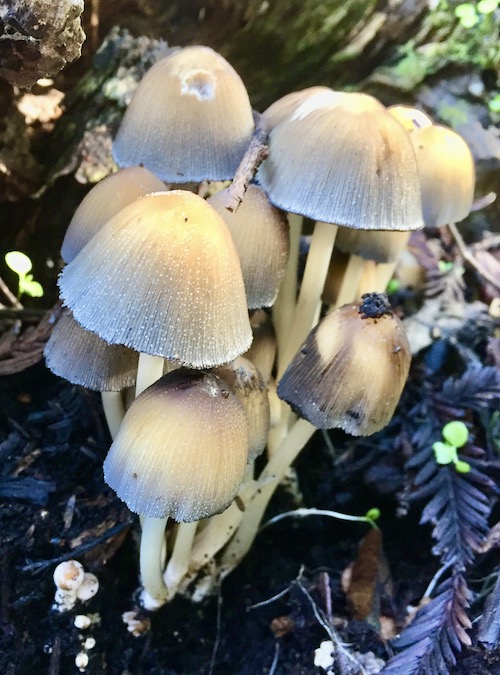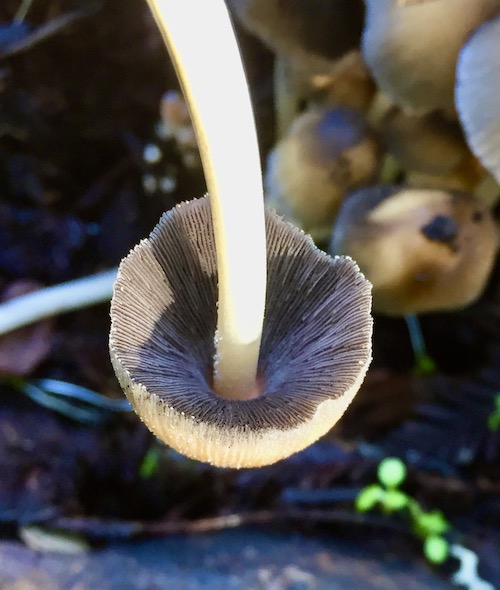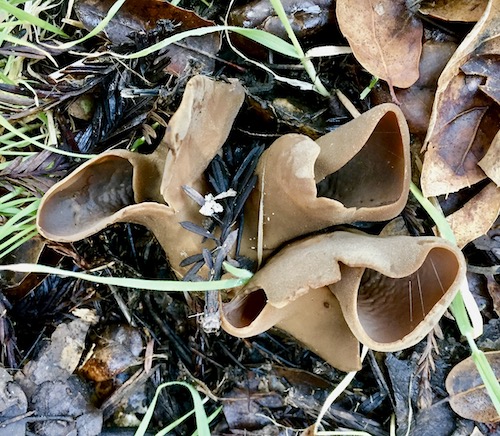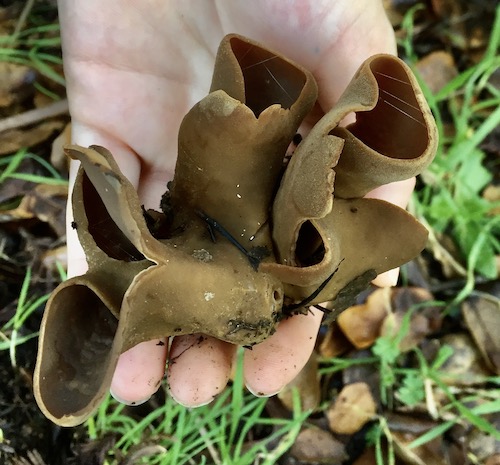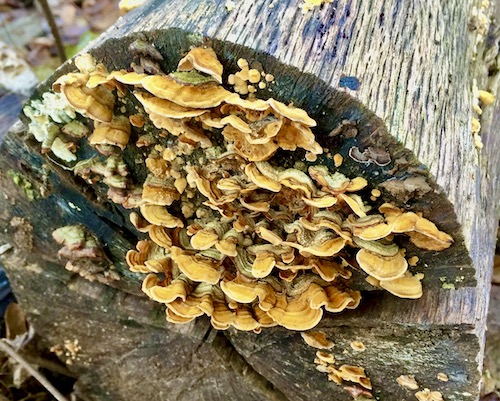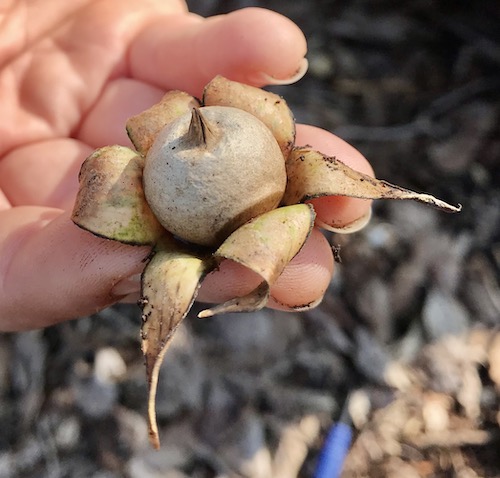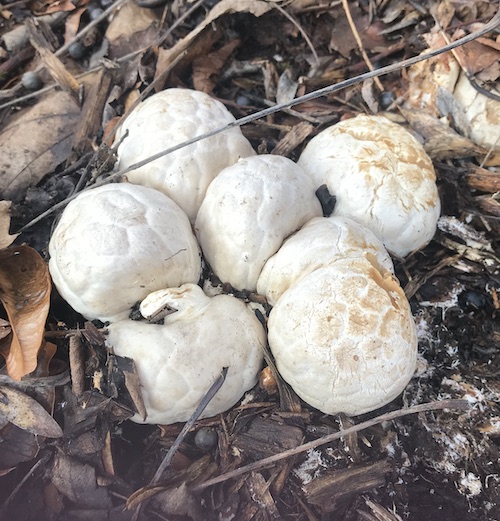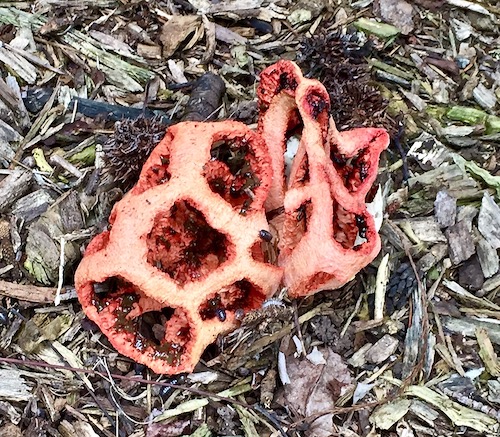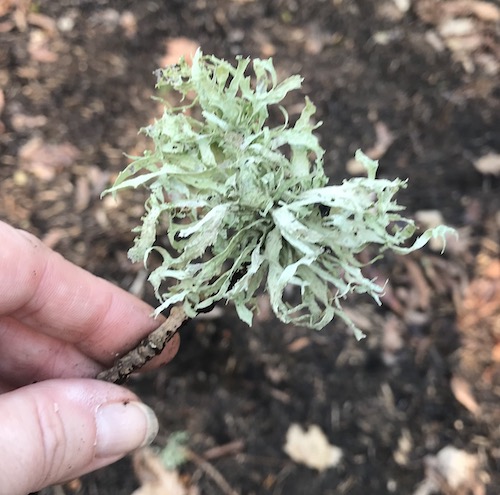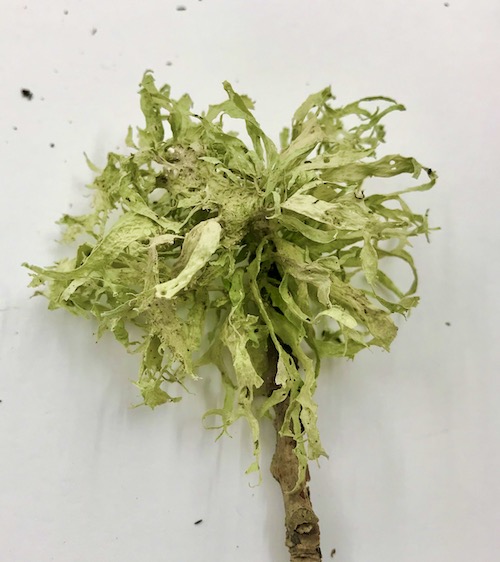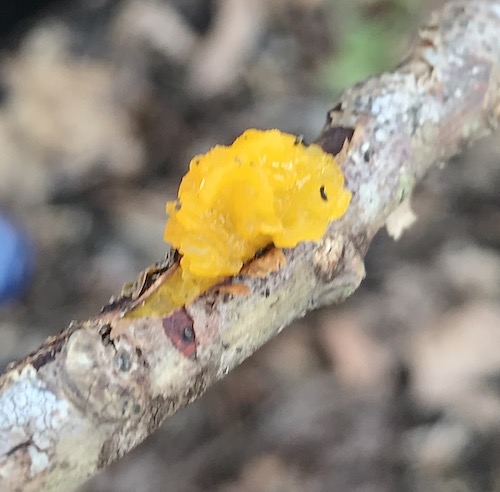Today, you are going to go on a virtual mushroom foraging excursion on the Sonoma State University campus. Once you return “home,” you will need to identify the specimens you collected, using the dichotomous key found here: Dichotomous Key to Major Groups of Fungi. You will not be trying to identify these ten specimens to species level, but will focus on discerning between the major groups of fungi that can be found on our northern California campus.
If you are completing this as extra credit, please submit a document with your identification of all 10 specimens to the “Extra Credit” assignment on Canvas.
Specimen #1
You begin your excursion by walking past the Wine Spectator building, and into the Native Plant Garden to the east of the campus lakes. You find this mushroom growing among some leaf litter and small herbaceous plants.
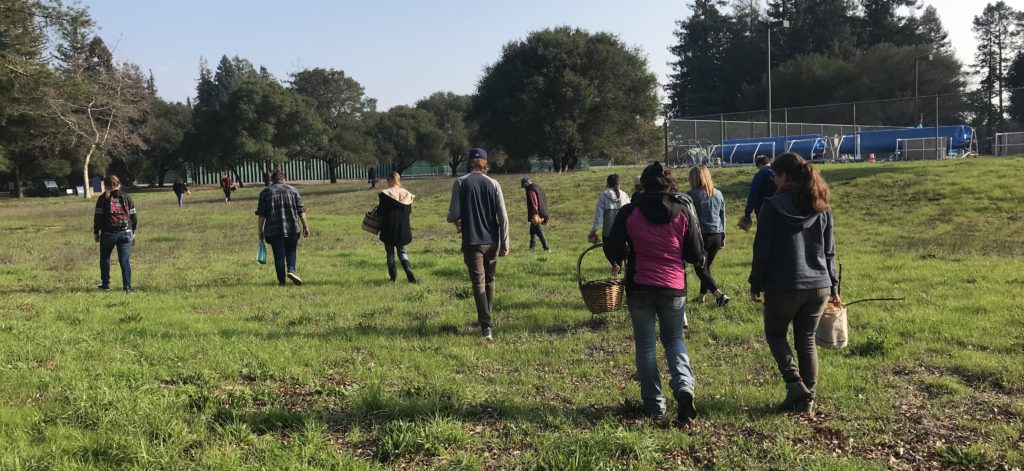
Specimen #2
Nearby, you discover an unusually shaped mushroom. While it does have a stipe and a cap, the cap in particular is strangely shaped. Looking closely, you notice deep grooves along the stalk.
Specimen #3
You notice this cluster of delicate mushrooms growing on the ground. When you brush away some of the leaf litter, you realize the stalks are a lot longer than they looked at first glance.
Specimen #4
You decide to take a walk along the path that parallels Copeland Creek. Here, you find another cluster of mushrooms. This variety seems to be quite common in the area.
Specimen #5
Also near the creek, there are several specimens – large and small – of this particular fungus.
Specimen #6
This colorful fungus was found growing on the side of a fallen log.
Specimen #7
As you start heading back toward Darwin Hall, you find this specimen near the Commencement Lawn. Is this even a fungus?
Specimen #8
Dinosaur eggs. That’s what these looked like at first. Then, nearby, you notice that some of them have begun to open up, revealing a cage-like formation inside. They give off a vaguely foul odor.
Specimen #9
When you see this specimen near Rachel Carson Hall, something tells you that it’s not a plant, even though it has very thin “leaves.”
Specimen #10
Your final specimen of the day, you find this brightly-colored glob clinging to a branch.

All photos are © W.A. St. John, and were taken on the Sonoma State University campus.

